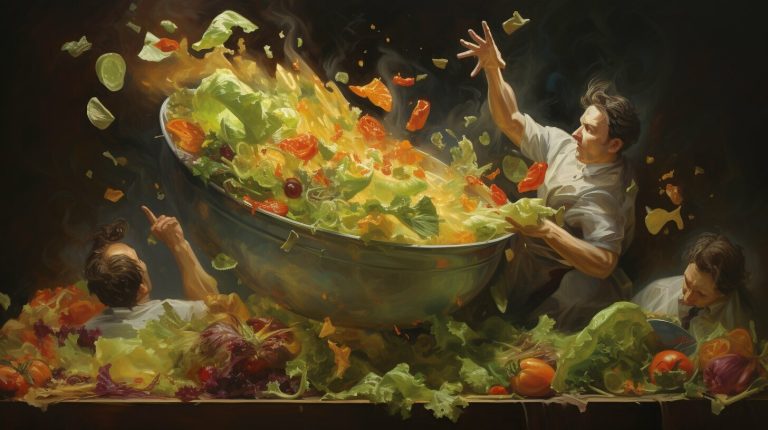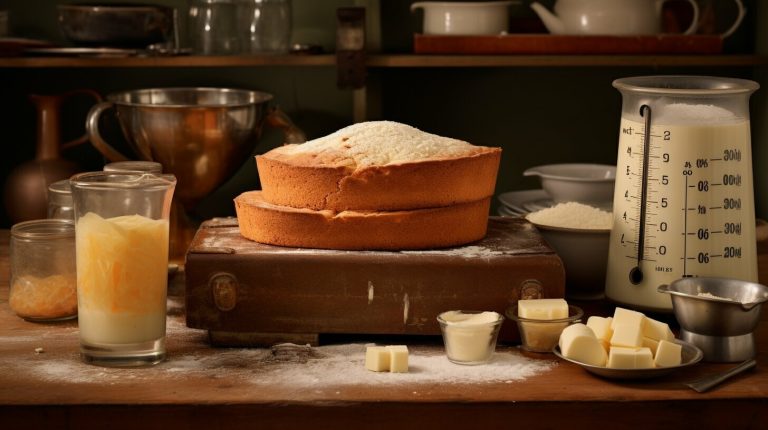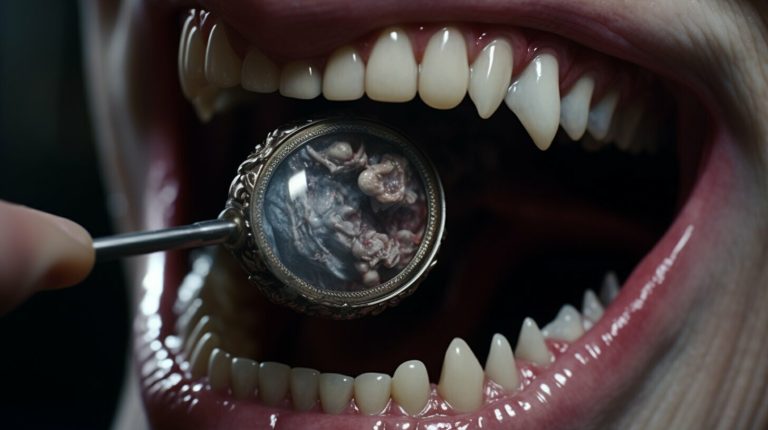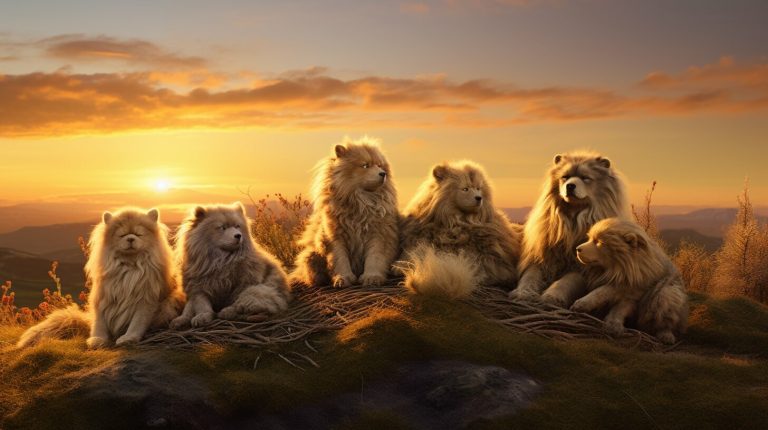Exploring Anthropology – Why Do Black People Have Big Lips?
Welcome to our exploration of anthropology, where we delve into the fascinating question: Why do black people have big lips? In this article, we will take a closer look at the genetic factors and cultural significance behind the size of black people’s lips. By understanding the science and history behind this physical characteristic, we can challenge stereotypes and appreciate the diversity within human populations.
Key Takeaways:
- Lip size variations exist among different races, and black people tend to have larger lips compared to other ethnic groups.
- Genetic factors contribute to lip size, and scientific studies have explored the anatomical differences in lip morphology among various ethnic groups.
- Stereotypes surrounding black people’s lips have been shaped by historical misconceptions and scientific racism.
- Cultural significance is attached to black people’s lips, and it is important to celebrate the diversity and complexity of black individuals.
- Understanding the evolutionary purpose and aesthetic aspects of lip size can lead to a more inclusive perception of black people’s lips.
Lip Anatomy in Different Ethnic Groups
Understanding the variations in lip size among different ethnic groups is essential to debunking misconceptions and embracing the diversity of human features. When it comes to lip morphology, there are notable differences among various ethnicities. These differences go beyond stereotypes and provide valuable insights into the intricate nature of human physiology.
| Ethnic Group | Lip Size Characteristics |
|---|---|
| African | In African populations, both upper and lower lips tend to be more protruded compared to other ethnicities. This feature contributes to the unique aesthetic of African facial features and showcases the beauty of diversity. |
| European | European populations generally exhibit less lip protrusion compared to other ethnic groups. However, it’s important to note that individual variations exist, and this should not be seen as a definitive characteristic for all individuals of European descent. |
| Asian | Asian populations often have thinner lips compared to other ethnic groups. This characteristic is not universal, as there is considerable diversity within different Asian subgroups. |
| Native American | Native American populations display a range of lip size variations depending on specific tribal and regional factors. It’s crucial to acknowledge the diversity within this ethnic group and not generalize based on limited observations. |
By examining these differences in lip anatomy, we can appreciate the beauty and uniqueness of each ethnicity’s features. It is crucial to move away from preconceived notions and stereotypes, recognizing that there is no single standard for lip size and shape.
Debunking Misconceptions About Racial Lip Differences
“The black lips stereotype is rooted in ignorance and racism. It is essential to challenge these stereotypes and recognize that lips come in various sizes and shapes, regardless of racial background.”
- Lip thickness does not define beauty: Contrary to popular belief, the thickness of one’s lips does not determine their beauty. The beauty industry has perpetuated false standards that have contributed to the misconception that only certain lip sizes are desirable. In reality, beauty is subjective and varies across cultures and individuals.
- Diversity within racial groups: It is crucial to highlight that lip size and shape vary widely within racial groups. Stereotyping an entire race based on a single physical characteristic is not only inaccurate but also perpetuates harmful biases. Embracing the diversity within each racial group is key to fostering inclusivity and understanding.
- Appreciating uniqueness: The diversity in lip size and shape among different ethnic groups should be celebrated rather than used as a basis for stereotypes. Each individual’s features contribute to their unique identity and should be respected and appreciated for their distinctiveness.
By understanding the variations in lip size among different ethnic groups, we can challenge misconceptions and promote a more inclusive and accepting society. Embracing diversity allows us to appreciate the rich tapestry of human features and move away from stereotypes that undermine the inherent beauty in each individual.
Genetic Factors and Lip Size
Unraveling the genetic factors behind lip size is crucial in dispelling stereotypes and promoting a more informed perspective. The characteristics of black people’s lips have been explored in the field of anthropology, with studies comparing the skeletal, dentoalveolar, and soft tissue features of white and black individuals. One study conducted in Brazil found that black subjects had a more protruded maxilla and mandible, a smaller chin prominence, and a greater maxillomandibular discrepancy compared to white subjects. They also exhibited a more horizontal craniofacial growth pattern and more protruded and proclined maxillary and mandibular incisors.
When examining soft tissue, both upper and lower lips were found to be more protruded in black subjects compared to whites, although lip thickness was similar between the two groups. These findings highlight the genetic variations that contribute to lip size among different races, debunking stereotypes about black lips.
A study conducted in the United States further explored the perception of lip protrusiveness in African American faces. The research revealed that younger orthodontists preferred a more protrusive lip profile compared to older orthodontists. Additionally, the study demonstrated that upper lip protrusion had the strongest correlation with attractiveness. These findings suggest that considering a suitable level of lip protrusiveness and thickness is essential for maintaining attractive aesthetics in African American patients.
Throughout history, stereotypes of African Americans have influenced perceptions of black facial features. Stereotypes such as the Mammy, Uncle Tom, Sapphire, Watermelon, and Mandingo stereotypes were formed as a result of scientific racism, serving to commodify black bodies and justify slavery. It is crucial to recognize and challenge these stereotypes, as they do not accurately reflect the diversity and complexity of black individuals. By understanding the genetic factors contributing to lip size and dispelling these stereotypes, we can foster a more inclusive and informed perspective.
Scientific Studies on Lip Characteristics
Scientific studies comparing lip characteristics have provided valuable insights into the variations in lip size among different racial groups. These studies have focused on the skeletal, dentoalveolar, and soft tissue characteristics of white and black individuals, shedding light on the complex nature of lip anatomy.
One study conducted in Brazil examined the facial features of black and white subjects. It found that black individuals had a more protruded maxilla and mandible, a smaller chin prominence, and a greater maxillomandibular discrepancy compared to their white counterparts. Additionally, black subjects exhibited a more horizontal craniofacial growth pattern and more protruded and proclined maxillary and mandibular incisors. In terms of soft tissue, both upper and lower lips were more protruded in black subjects but had similar thickness compared to white individuals.
| Study | Findings |
|---|---|
| Study in Brazil | Black subjects exhibited a more protruded maxilla and mandible, a smaller chin prominence, and a greater maxillomandibular discrepancy compared to white subjects. Both upper and lower lips were more protruded in black subjects, with similar thickness compared to white individuals. |
An additional study conducted in the United States explored the perception of lip protrusiveness in African American faces. The study found that younger orthodontists preferred a more protrusive lip profile when compared to their older counterparts. Furthermore, the study indicated that upper lip protrusion had the strongest correlation with attractiveness, suggesting that an appropriate level of lip protrusiveness and thickness should be considered for aesthetic purposes in African American patients.
Throughout history, stereotypes of African Americans have influenced perceptions of black facial features. Stereotypes such as the Mammy, Uncle Tom, Sapphire, Watermelon, and Mandingo stereotypes were formed as a result of scientific racism and served to commodify black bodies and justify slavery. However, it is crucial to recognize and challenge these stereotypes as they do not accurately depict the diversity and complexity of black individuals.
Cultural Significance of Black People’s Lips
Black people’s lips hold cultural significance that we must explore to understand their importance beyond physical appearance. Throughout history, black individuals have faced stereotypes and misconceptions about their facial features, including their lips. These stereotypes, rooted in scientific racism and perpetuated by society, have unfairly portrayed black facial features as inferior or exotic.
However, it is essential to recognize the diversity and beauty in lip morphology among black individuals. The cultural significance of black people’s lips goes far beyond physical appearance. They symbolize resilience, strength, and cultural identity within the black community.
Dr. Yaba Blay, a renowned scholar, explains that “Black people’s lips are a testament to the rich history and beauty of the African diaspora. They reflect our heritage, our connection to our ancestors, and our ability to navigate a world that often tries to diminish our worth.”
| Black People’s Lips in Culture | Meaning |
|---|---|
| African Tribal Art | In many African cultures, exaggerated lips have been celebrated and depicted in sculptures and art as a symbol of beauty and wisdom. |
| Expression and Communication | Black individuals often use their lips as a tool for expression and communication, emphasizing the importance of verbal and non-verbal communication within their communities. |
| Musical Traditions | In genres such as jazz, blues, and hip-hop, black people’s lips play a crucial role in creating unique sounds through instruments like saxophones, harmonicas, and beatboxing. |
It is essential to challenge and debunk the stereotypes surrounding black lips. By embracing the diversity in lip morphology and understanding the cultural significance attached to black people’s lips, we can celebrate the beauty and resilience of black individuals while dismantling harmful misconceptions.
“Our lips are an affirmation of our existence, a declaration of our presence in this world,” Dr. Blay affirms. They are a testament to the rich heritage and culture that black individuals have contributed to society.
Evolutionary Purpose of Lip Size in Black Populations
Exploring the evolutionary purpose of lip size in black populations offers insights into the role of this physical trait in human diversity. The characteristics of black people’s lips have been extensively studied in the field of anthropology, shedding light on the genetic and cultural factors that contribute to lip size variations in different races.
A study conducted in Brazil compared the skeletal and soft tissue characteristics of white and black individuals. It revealed that black subjects had a more protruded maxilla and mandible, as well as a greater maxillomandibular discrepancy compared to white individuals. This suggests that lip protrusion plays a significant role in the overall facial structure of black populations.
Furthermore, research conducted in the United States explored the perception of lip protrusiveness in African American faces. It found that orthodontists’ preferences for lip profiles varied depending on their age, with younger orthodontists expressing a stronger preference for a more protrusive lip profile. Upper lip protrusion was found to have the strongest correlation with attractiveness, implying that lip size and protrusion contribute to facial aesthetics.
It is essential to challenge historical stereotypes that have influenced perceptions of black facial features, including black lips. These stereotypes, such as the Mammy, Uncle Tom, Sapphire, Watermelon, and Mandingo stereotypes, were formed as a result of scientific racism and served to commodify black bodies and justify slavery. Recognizing the diversity and complexity of black individuals is crucial in debunking these stereotypes and celebrating the rich diversity of human lip morphology.
| Research Findings | Study Location | Key Insights |
|---|---|---|
| Brazilian study | Brazil | Black subjects had a more protruded maxilla and mandible, as well as a greater maxillomandibular discrepancy compared to white individuals. |
| American study | United States | Orthodontists’ preferences for lip profiles varied depending on their age, with younger orthodontists expressing a stronger preference for a more protrusive lip profile. Upper lip protrusion had the strongest correlation with attractiveness. |
“It is essential to challenge historical stereotypes that have influenced perceptions of black facial features, including black lips.”
Understanding the Complexity of Lip Size
- Genetic and environmental factors contribute to the variations in lip size among different races.
- Lip size plays a significant role in facial aesthetics and overall attractiveness.
- Challenging stereotypes associated with black lips is crucial for promoting inclusivity and celebrating diversity.
- Further research is needed to fully understand the evolutionary purpose and significance of lip size in black populations.
Debunking Stereotypes About Black Lips
It is crucial to challenge stereotypes about black lips in order to foster a more inclusive and accurate understanding of this physical trait. Throughout history, stereotypes and misconceptions have influenced perceptions of black facial features, including black lips. These stereotypes, such as the Mammy, Uncle Tom, Sapphire, Watermelon, and Mandingo stereotypes, were formed as a result of scientific racism and served to commodify black bodies and justify slavery.
However, it is important to recognize that these stereotypes do not accurately reflect the diversity and complexity of black individuals. Scientific studies comparing the skeletal, dentoalveolar, and soft tissue characteristics of white and black individuals have provided valuable insights into the variations in lip size among different races. One study conducted in Brazil found that black subjects had a more protruded maxilla and mandible, as well as more protruded and proclined maxillary and mandibular incisors. In terms of soft tissue, both upper and lower lips were more protruded in black subjects compared to whites, but lip thickness was similar between the two groups.
Another study conducted in the United States examined the perception of lip protrusiveness in African American faces. It revealed that younger orthodontists preferred a more protrusive lip profile compared to older orthodontists, and that upper lip protrusion had the strongest correlation with attractiveness. These findings emphasize the importance of considering an adequate level of lip protrusiveness and thickness when assessing aesthetic aspects in African American patients.
Table: Skeletal and Soft Tissue Characteristics of Black and White Individuals
| Characteristic | Black | White |
|---|---|---|
| Maxilla and Mandible Protrusion | More protruded | Less protruded |
| Chin Prominence | Smaller | Larger |
| Maxillomandibular Discrepancy | Greater | Smaller |
| Lip Protrusion (Upper and Lower) | More protruded | Less protruded |
| Lip Thickness | Similar | Similar |
By challenging the stereotypes about black lips and acknowledging the scientific evidence, we can promote a more accurate understanding of the diversity and cultural significance of this physical trait. It is important to celebrate the beauty and uniqueness of black individuals and reject the harmful narratives that have perpetuated misconceptions and biases. Embracing diversity in lip morphology and recognizing the complex genetic factors contributing to lip size will contribute to a more inclusive and equitable society.
Historical Context and Stereotypes
To fully comprehend the stereotypes surrounding black lips, we must examine the historical context that has perpetuated these misconceptions. Throughout history, stereotypes of African Americans have influenced perceptions of black facial features, including the size and shape of their lips. These stereotypes, such as the Mammy, Uncle Tom, Sapphire, Watermelon, and Mandingo stereotypes, were formed as a result of scientific racism and served to commodify black bodies and justify slavery.
These stereotypes have falsely portrayed black individuals as hypersexualized, unintelligent, and inferior, perpetuating harmful and racist attitudes. By reducing black facial features, including their lips, to stereotypes, society has failed to recognize the diversity, complexity, and beauty of black individuals. It is crucial to challenge and confront these stereotypes, as they do not accurately reflect the reality of black lip morphology and the cultural significance attached to them.
Throughout history, these stereotypes have had a significant impact on the self-perception and self-esteem of black individuals. They have perpetuated a biased beauty standard that favors Eurocentric features, leading to a dismissal and devaluation of naturally occurring characteristics, such as full lips. However, it is important to celebrate and appreciate the diversity in lip morphology found among black people, as this diversity is as beautiful and valuable as any other.
By understanding the historical context behind these stereotypes, we can work towards dismantling their influence and promoting a more inclusive perception of black people’s lips. It is essential to recognize that lip size variations exist among different races, and each variation is equally valid and significant. Embracing and celebrating this diversity can help us move towards a more inclusive and accepting society.
| Stereotypes | Description |
|---|---|
| Mammy | A stereotype portraying black women as servile and nurturing, reinforcing the idea of their place as caretakers in white households. |
| Uncle Tom | A stereotype depicting black men as subservient and deferential to white people, perpetuating notions of black inferiority and docility. |
| Sapphire | A stereotype depicting black women as loud, aggressive, and emasculating, reinforcing negative and degrading stereotypes. |
| Watermelon | A stereotype associating black individuals, particularly black men, with a fondness for watermelon, perpetuating racist caricatures and dehumanization. |
| Mandingo | A stereotype portraying black men as hypersexual and physically dominant, perpetuating harmful and racist narratives about black masculinity. |
Perception of Lip Protrusiveness in African American Faces
Research on the perception of lip protrusiveness in African American faces sheds light on the aesthetic considerations associated with lip size. Several studies have explored how lip size and protrusion are perceived and valued in this ethnic group, offering valuable insights into the diversity of lip morphology.
A study conducted in the United States examined the preferences of orthodontists in regard to lip protrusion in African American patients. The study found that there were age-related differences in these preferences, with younger orthodontists showing a preference for a more protrusive lip profile compared to their older counterparts.
In addition, the study identified that upper lip protrusion had the strongest correlation with attractiveness. This suggests that maintaining an adequate level of lip protrusiveness is an important consideration for achieving aesthetically pleasing outcomes in African American patients.
It is important to note that perceptions of lip size and protrusion are influenced by cultural and societal factors, as well as personal preferences. Therefore, it is crucial to approach the assessment of lip characteristics in African American individuals with a nuanced understanding of the diverse aesthetic standards within this ethnic group.
| Study Findings | Aesthetic Considerations |
|---|---|
| Youthful orthodontists preferred a more protrusive lip profile. | An adequate level of lip protrusiveness is important for attractive aesthetics in African American patients. |
| Upper lip protrusion had the strongest correlation with attractiveness. | Maintaining an aesthetically pleasing lip profile involves considering the protrusion of the upper lip. |
| Perceptions of lip size and protrusion are influenced by cultural and societal factors. | The assessment of lip characteristics in African American individuals should be approached with an understanding of diverse aesthetic standards. |
In Summary
The perception of lip protrusiveness in African American faces offers insights into the aesthetic considerations associated with lip size. Studies have found that younger orthodontists tend to prefer a more protrusive lip profile, with upper lip protrusion having the strongest correlation with attractiveness. These findings highlight the importance of considering lip protrusiveness when evaluating the aesthetic outcomes for African American patients. It’s important to note that perceptions of lip size and protrusion are influenced by various cultural and societal factors, emphasizing the need for a nuanced understanding of diverse aesthetic standards within this ethnic group.
Conclusion
By exploring the anthropological, genetic, and cultural aspects of lip size among black individuals, we can appreciate the complexity and diversity of human physical traits. The size of black people’s lips has been a subject of curiosity and stereotypes, but scientific studies have debunked many misconceptions.
Research has revealed that lip size variations exist among different races, with black individuals often having more protruded upper and lower lips compared to their white counterparts. These variations in lip morphology are a result of genetic factors and contribute to the unique beauty and aesthetic of black individuals.
It is crucial to challenge historical stereotypes that have influenced perceptions of black facial features, such as the Mammy, Uncle Tom, Sapphire, Watermelon, and Mandingo stereotypes. These stereotypes were formed through scientific racism and served to dehumanize and commodify black bodies. They do not accurately represent the diverse and complex physical traits found within the black community.
By celebrating the diversity of lip size and understanding its cultural significance, we can foster a more inclusive and accepting society. It is essential to recognize that physical traits, including lip size, are not indicators of worth or beauty. Each individual’s unique features should be embraced and celebrated as part of the rich tapestry of human diversity.
FAQ
Q: Why do black people have big lips?
A: The size of lips can vary among different ethnic groups, and black individuals may have more protruded and proclined lips compared to other races. This is due to genetic factors and variations in craniofacial growth patterns.
Q: Are there differences in lip anatomy among ethnic groups?
A: Yes, lip size and shape can vary among different ethnic groups. It is important to understand that these differences are natural and should be celebrated as a part of human diversity.
Q: Does lip size have a genetic component?
A: Yes, lip size is influenced by genetics. However, it is important to note that individual variation exists, and not all members of a particular ethnic group will have the same lip size.
Q: What do scientific studies say about lip characteristics in different races?
A: Scientific studies have compared the lip characteristics of different racial groups and have found variations in lip size, shape, and protrusion. These studies provide valuable insights into the diversity of lip morphology among races.
Q: What is the cultural significance of black people’s lips?
A: Throughout history, stereotypes have influenced perceptions of black facial features, including lips. However, it is important to challenge these stereotypes and recognize the diversity and complexity of black individuals.
Q: What is the evolutionary purpose of lip size in black populations?
A: Lip size, like other physical traits, has evolved due to various factors. It may serve functional purposes, such as enhancing speech articulation or protecting the oral cavity.
Q: How do we debunk stereotypes about black lips?
A: By examining scientific evidence and promoting a more accurate understanding of lip size variations, we can challenge stereotypes and celebrate the diversity present in all individuals, regardless of their race.
Q: How have historical stereotypes influenced perceptions of black lips?
A: Historical stereotypes, rooted in scientific racism and the commodification of black bodies, have shaped perceptions of black facial features, including lips. It is crucial to acknowledge and work towards dismantling these stereotypes.
Q: What is the perception of lip protrusiveness in African American faces?
A: Studies have found that perceptions of lip protrusiveness can vary among orthodontists, with younger professionals tending to prefer a more protrusive lip profile. Upper lip protrusion has been shown to have a strong correlation with attractiveness.
Q: Why is it important to understand lip size variations among races?
A: Understanding lip size variations among races is essential for challenging stereotypes and promoting inclusivity. It allows us to appreciate and celebrate the diversity present in human physical traits.
- Discovering Why Do Women Wear Lipstick: A Deeper Look - 19/12/2023
- Why Do Golfers Only Wear One Glove? - 16/12/2023
- Why Don’t Hobbits Wear Shoes? - 14/12/2023
Hi, I’m Rhiannon, the lead author behind The News Wire. As a passionate journalist, I strive to bring you the latest news and updates from all over the world. With a keen eye for detail and a dedication to unbiased reporting, I aim to deliver well-researched and informative articles that keep you informed and engaged. From breaking news to in-depth analyses, I cover a wide range of topics with the aim of keeping you in the loop. Join me on The News Wire as we explore the dynamic and ever-changing landscapes of global events, uncovering the stories that matter most.






